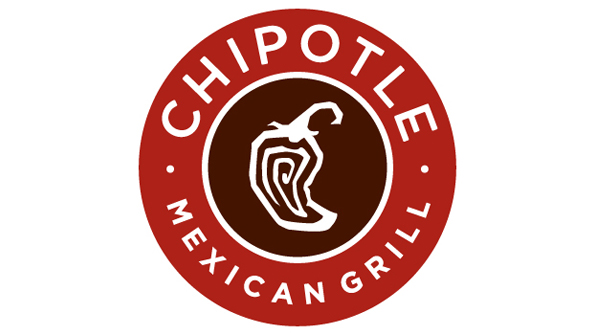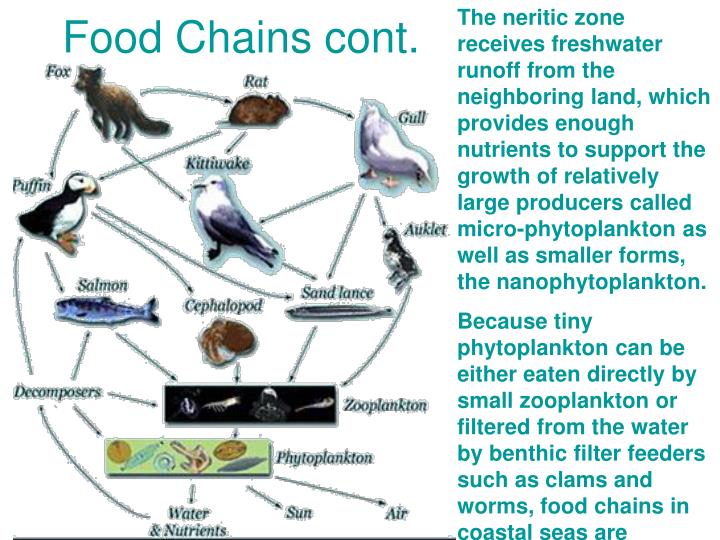| Food Chains | |
|---|---|
| Directed by | Sanjay Rawal |
| Produced by | Smriti Keshari Hamilton Fish Sanjay Rawal |
| Written by | Erin Barnett Sanjay Rawal |
| Starring | Eve Ensler Barry Estabrook Dolores Huerta Robert F. Kennedy Jr. Kerry Kennedy Eva Longoria Eric Schlosser Forest Whitaker |
| Music by | Gil Talmi Macklemore |
| Cinematography | Forest Woodward |
| Edited by | Erin Barnett |
| Distributed by | Screen Media |
Release date | |
Running time | 83 minutes |
| Country | United States |
| Language | English |
Food Chains is a 2014 American documentary film about agricultural labor in the United States directed by Sanjay Rawal. It was the Recipient of the 2015 James Beard Foundation Award for Special/Documentary.[1]
Like all other ecosystems, the food chains in the Amazon have 5 different components: 1. Primary producers – These are the organisms that produce the source of food for the community. Producers are usually green plants and are essential for the survival of the community. Food chain is started by plants and ended by animals. Plants (grass) is eaten by primary consumers. The primary consumers (rabbit) is eaten by secondary consumers (fox). For example, grass – rabbit – fox. Fast-food style service, often located in shopping malls and supermarkets. Lists sample menu, locations, and job descriptions.
Summary[edit]
In Immokalee, Florida, migrant farmworkers pick fruits and vegetables that are sold to large US food wholesalers.[2] However, their working conditions are shown to be less than favorable.[2] As a result, they form the Coalition of Immokalee Workers (CIW) to raise awareness and improve their circumstances.[3] Specifically, they go on a hunger strike to pressure Publix, a Florida-based food wholesaler, to pay them one penny more per pound of tomato.[3] Meanwhile, the documentary also shows farmworkers in the vineyards of the Napa Valley.[4]
Production[edit]
The film was produced by actress and Democratic fundraiser Eva Longoria, Fast Food Nation author Eric Schlosser, and heiress Abigail Disney, among others.[4]
It was presented at the Berlin Film Festival, the Tribeca Film Festival and the Napa Valley Film Festival.[2][4] Shortly after, Screen Media purchased the distribution rights for North America.[2] A Spanish version, narrated by actor Demián Bichir was released.[3]
Critical reception[edit]
In a review for The Hollywood Reporter, Frank Scheck suggested not much had changed since Harvest of Shame, a 1960 documentary about the same topic.[3] He concluded that Food Chains was 'simultaneously inspirational and deeply depressing.'[3] Writing for the San Francisco Chronicle, Tara Duggan added that there were 'many chilling moments' in the documentary.[4] In The New York Daily News, Elizabeth Weitzman called the documentary 'unsettling,' concluding 'you will certainly leave the theater more enlightened than when you arrived.'.[5] Jeannette Catsoulis of the New York Times called the film 'rousing' and 'emphatic and empathetic.'.[6]


References[edit]
- ^James Beard Foundation, / The 2015 Book, Broadcast, and Journalism Awards: Complete Winner Recap, James Beard Foundation, April 24, 2015
- ^ abcdDave McNary, Eva Longoria’s ‘Food Chains’ Documentary Getting U.S. Distribution, Variety, March 31, 2014
- ^ abcdeFrank Scheck, 'Food Chains': Film Review, The Hollywood Reporter, November 24, 2014
- ^ abcdTara Duggan, Documentary shows how those who pick our food get a raw deal, San Francisco Chronicle, November 25, 2014
- ^Elizabeth Weitzman, 'Food Chains': Movie Review, The New York Daily News, November 20, 2014
- ^Jeannette Catsoulis, In for a Penny, in for a Pound, and Better Work Conditions, The New York Times, November 20, 2014
External links[edit]
- Food Chains on IMDb
The term food chain refers to the sequence of events in an ecosystem, where one organism eats another and then is eaten by another organism. It starts with the primary source, like the sun or hydrothermal vents, where producers make food, continues with consumers, or animals who eat the food, and ends with the top predator.
Here, we have brought together a collection of examples of food chains for you to study. Food chains are the basic unit of any ecosystem, connecting with one another to form the food webs that map the interactions of life on Earth.
Food Chains on Land
Land-based food chains represent the most familiar forms of nature to humans. Everything ultimately derives its energy from the sun, and most food chains follow the pattern 'herbivore, carnivore, maybe another carnivore or two, apex predator.' But there is an almost endless diversity within that pattern and even a few chains that break it.
One fascinating break in that pattern is the omnipresent decomposer. Organisms ranging from bacteria and maggots to the noble cockroach feed on the dead, and in doing so break them down into the nutrients that keep the food chain going. By eating and excreting, decomposers return the nutrients of dead organisms to the soil, which nourishes the plants that start the chains all over again.
- Nectar (flowers) - butterflies - small birds - foxes
- Dandelions - snail - frog - bird - fox
- Dead plants - centipede - robin - raccoon
- Decayed plants - worms - birds - eagles
- Fruits - tapir - jaguar
- Fruits - monkeys - monkey-eating eagle
- Grass - antelope - tiger - vulture
- Grass - cow - man - maggot
- Grass - grasshopper - frog - snake - eagle
- Hazel tree - wood mouse - tawny owl
- Herring - salmon - bear
- Juniper berries - rabbit - fox
- Leaves - ants - anteaters
- Leaves - caterpillars - birds - snakes
- Leaves - giraffes - lions - jackals
- Nuts - squirrels - hawks
- Plants - mice - badgers - bobcats
- Plants - mule deer - mountain lion
- Rice - rat - owl
- Sun - berries - bear - bacteria
- Sun - grass - ant - echidna - dingo
- Sagebrush - elk - wolf
- Switchgrass - earthworm - quail - hawk
- Willow shoots - musk oxen - wolves


Food Chains in Water
Aquatic food chains are where things get interesting. Much of the ocean remains unexplored, and food chains in water-based environments are often complex and surprising to us land-dwellers. The most famous example is chemosynthesis, which we'll cover later. But even the aquatic food chains that follow expected patterns can be fascinating.
Decomposers play a crucial role here too, as aquatic decomposers distribute nutrients not just into the soil, but throughout the water column, feeding the plankton that form the base of all aquatic food chains.
- Algae - otocinclus catfish - osprey
- Algae - mosquito larvae - dragonfly larvae - fish - raccoons
- Crayfish - catfish - humans
- Insect - fish - humans
- Mayflies - trout - humans
- Phytoplankton - copepod - fish - squid - seal - orca - brittle star
- Phytoplankton - copepod - bluefish - swordfish - human
- Phytoplankton - copepod - bluehead wrasse - striper - sea cucumber
- Phytoplankton - zooplankton - anchovy - tuna - humans
- Phytoplankton - zooplankton - fish - seal - great white shark
- Phytoplankton - zooplankton - herring - harbor seal
- Plankton - shrimp - herring - cat
- Plankton - snail - mackerel - shark
- Plankton - snail - tuna - dolphin
- Plankton - threadfin shad - bass - humans
- Seaweed - periwinkle - ragworm - curlew
- Caterpillars - turtles - alligators - humans
- Watercress - mayfly larva - stickleback
Chemosynthetic Food Chains
Until the 1970s, it was accepted scientific fact that all energy on Earth comes from the sun. Every food chain was based on plants turning sunlight into energy. Then, deep-sea submersibles discovered whole ecosystems that existed in the darkest depths of the ocean.
There, microbes that never saw the sun derived nutrients from compounds vented into the water from deep in the Earth's crust and produced chemicals that supported whole new food webs never dreamt of on the surface. That's chemosynthesis. Here are some examples.
Food Webs
- Bacteria - clams - octopus
- Bacteria - copepods - shrimp - zoarcid fish
- Bacteria - tubeworms - zoarcid fish
- Microbes - ridgeia tubeworms - spider crab - octopus
- Microbes - shrimp - crabs
- Mussels - brachyuran crabs - octopus
- Mussels - shrimp - anemone
- Tubeworms - crabs - shrimp - zoarcid fish
The Circle of Life
Food Chains For Kids
All plants and animals are part of a food chain. These examples of food chains are only a small part of the vast food webs that span our world. They simply represent the variety of plants and animals, and the complexity of interactions, that make up the amazing diversity of life on Earth.
Pictures Of Food Chains
Now you've learned about life on Earth, read up about the landforms that make up the Earth's surface.
Food Chains And Food Webs
B.A. English & Theatre